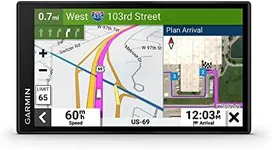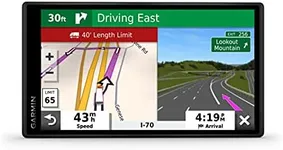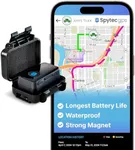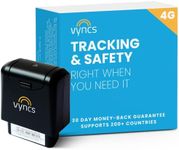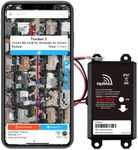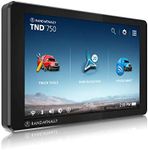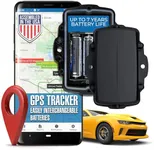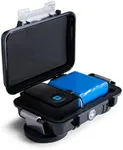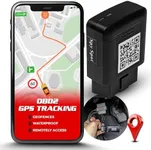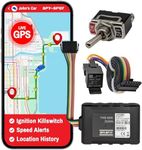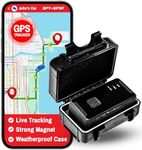Buying Guide for the Best Trucks GPS Trackers
Choosing the right GPS tracker for your truck is crucial for ensuring the safety, efficiency, and productivity of your fleet. A good GPS tracker can help you monitor your trucks in real-time, optimize routes, reduce fuel costs, and improve overall fleet management. To make an informed decision, you need to understand the key specifications and how they align with your specific needs.Real-Time TrackingReal-time tracking allows you to monitor the exact location of your trucks at any given moment. This is important for ensuring timely deliveries, responding quickly to emergencies, and providing accurate ETAs to customers. Real-time tracking can range from updates every few seconds to every few minutes. If you need precise, up-to-the-minute information, opt for a tracker with more frequent updates. For less critical applications, a tracker with less frequent updates may suffice.
Battery LifeBattery life determines how long the GPS tracker can operate without needing a recharge or replacement. This is crucial for ensuring continuous tracking without interruptions. Battery life can vary from a few days to several months, depending on the tracker and its usage. For long-haul trucks or vehicles that are on the road for extended periods, a tracker with a longer battery life is ideal. For trucks that return to a central location frequently, a shorter battery life may be acceptable as you can recharge or replace the battery more often.
GeofencingGeofencing allows you to set virtual boundaries around specific areas and receive alerts when a truck enters or exits these zones. This feature is important for monitoring unauthorized use, ensuring compliance with designated routes, and enhancing security. Geofencing capabilities can vary, with some trackers allowing for multiple zones and customizable shapes. If you need to monitor specific areas closely, choose a tracker with advanced geofencing features. For basic monitoring, a simpler geofencing option may be sufficient.
Data Storage and HistoryData storage and history refer to the ability of the GPS tracker to store and provide access to past tracking data. This is important for analyzing routes, identifying patterns, and resolving disputes. Some trackers offer limited storage, while others provide extensive historical data. If you need to review and analyze data over long periods, opt for a tracker with ample storage and easy access to historical data. For short-term tracking needs, a tracker with limited storage may be adequate.
Durability and Weather ResistanceDurability and weather resistance ensure that the GPS tracker can withstand harsh conditions and continue to function reliably. This is crucial for trucks that operate in extreme weather or rough environments. Trackers can range from basic models with minimal protection to rugged devices designed to endure severe conditions. If your trucks operate in challenging environments, choose a tracker with high durability and weather resistance. For trucks in milder conditions, a less rugged tracker may be sufficient.
Installation and CompatibilityInstallation and compatibility refer to how easily the GPS tracker can be installed and whether it is compatible with your truck's systems. This is important for ensuring a smooth setup and integration with your existing fleet management tools. Some trackers are plug-and-play, while others may require professional installation. If you prefer a quick and easy setup, look for a plug-and-play tracker. For more complex needs, a tracker that requires professional installation may offer more advanced features and better integration.
Alerts and NotificationsAlerts and notifications keep you informed about important events, such as speeding, idling, or unauthorized use. This is important for maintaining control over your fleet and ensuring compliance with policies. Trackers can offer a range of alerts, from basic notifications to customizable alerts based on specific criteria. If you need detailed and customizable alerts, choose a tracker with advanced notification features. For basic monitoring, a tracker with standard alerts may be sufficient.
